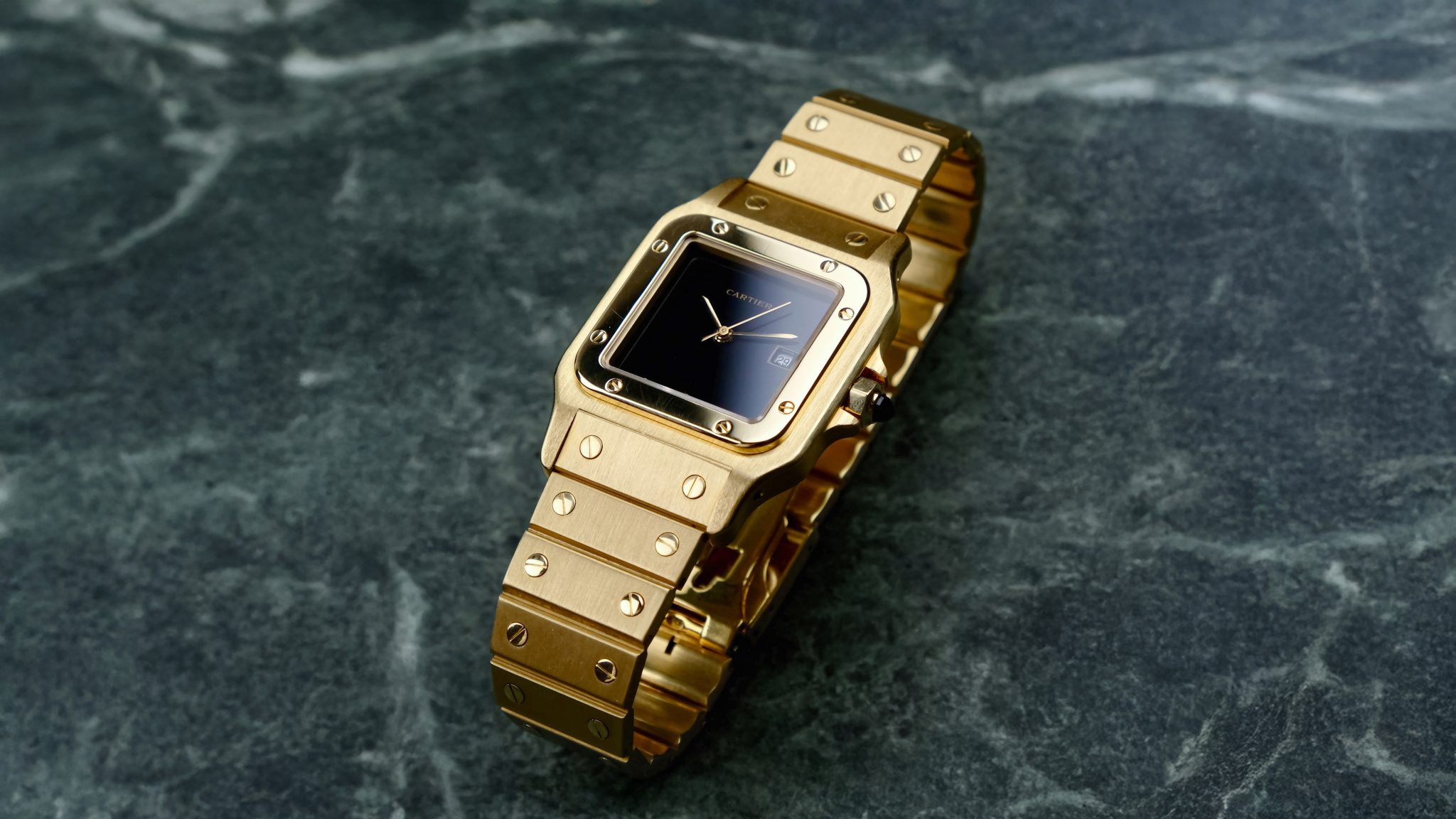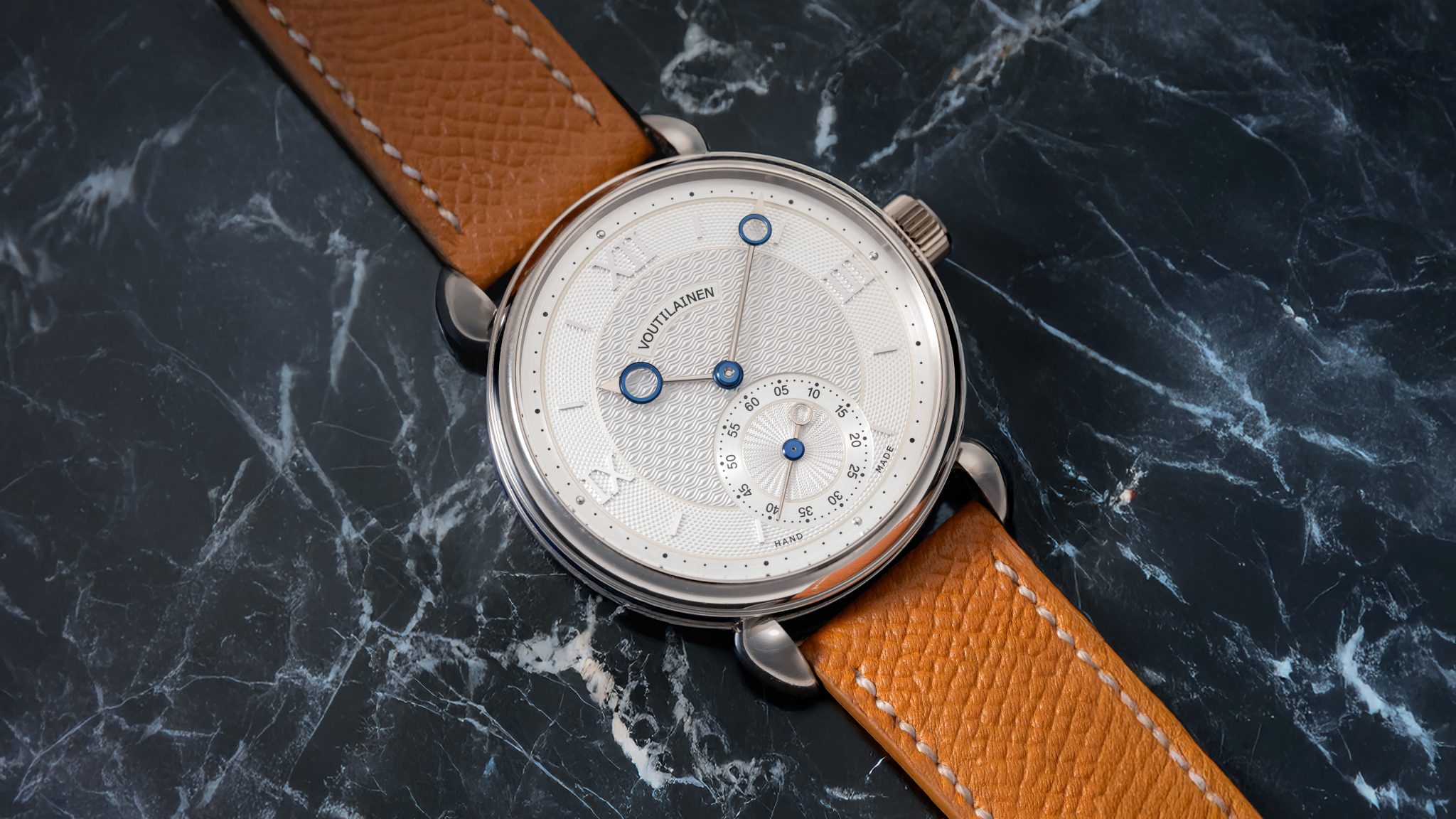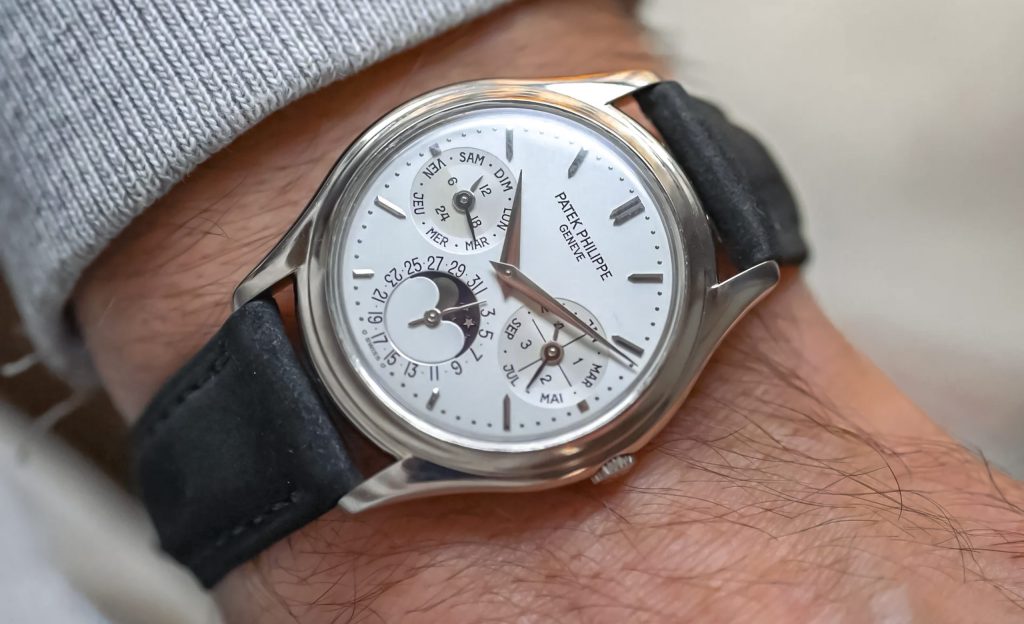
3940G Patek Philippe Perpetual Calendar
When John Reardon states that ‘for the price, there is arguably no other watch that encapsulates all that defines Patek Philippe’, you listen. In gross understatement, the man knows Patek Philippe. Further, when nearly every notable collector starts referring to the 3940 as Patek’s quintessential calendar, you know we are at the outset of a groundswell. Increasingly, collectors are seeing the 3940 as Patek’s bold first step toward the modern era. The perpetual calendar was released in 1985, when many were still reeling from the ticking seconds hand. Rather than be sparing, Patek’s audacious first step was exemplary for its decidedly traditional approach, elegant complication execution, and serial production volume. As Patek’s neo-vintage years are today fully en vouge, the 3940 is considered by many their most attractive perpetual calendar, full stop.
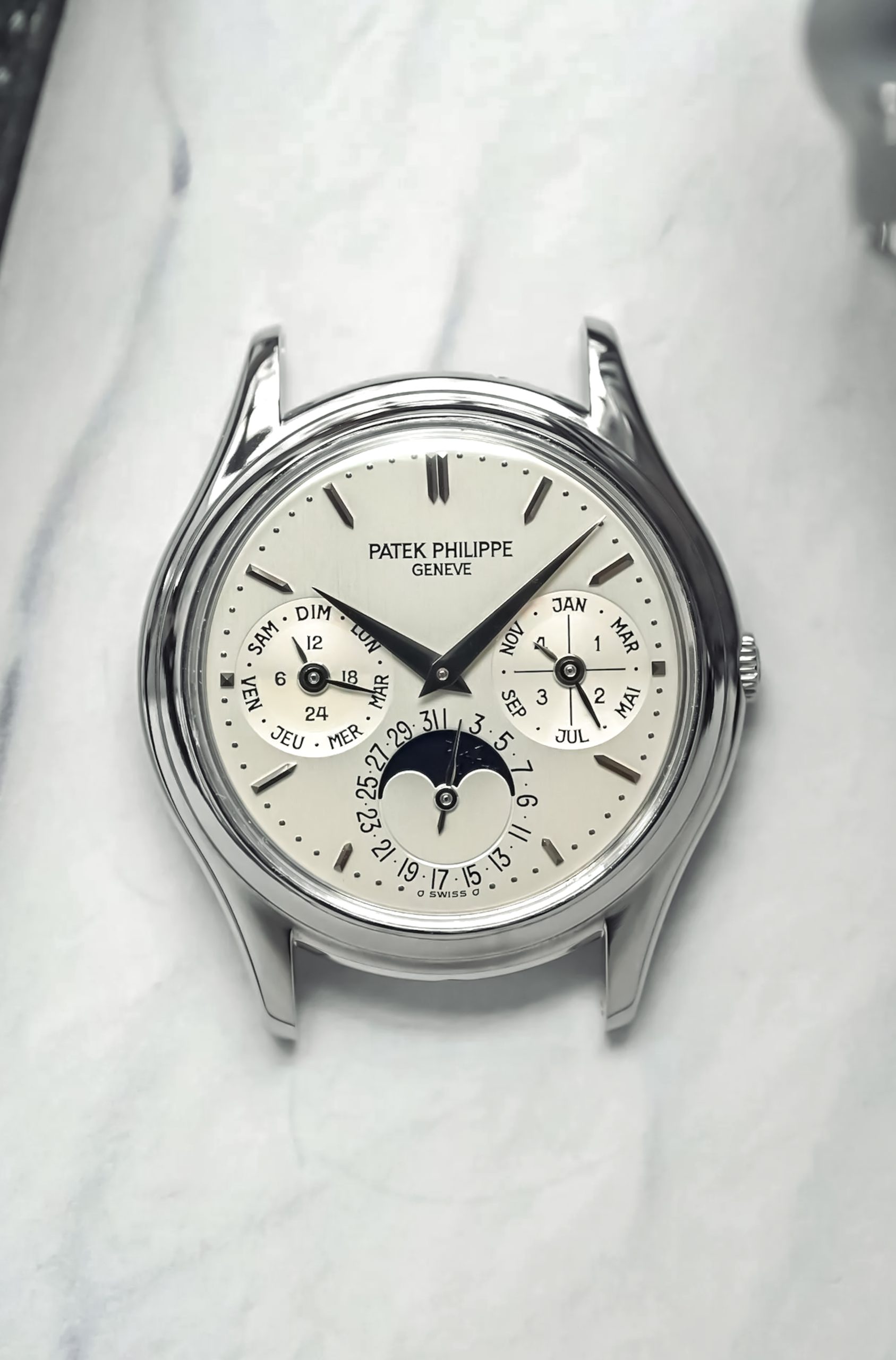
The 3940 ran from that tenuous introduction in 1985 to an official discontinuation in 2007 as a legend. The immensely impressive complicated reference was a statement: mechanical watchmaking is here to stay. Philippe Stern chose a 3940 as his personal watch not unthinkingly. He had created an ultra-thin perpetual calendar that would not need to be adjusted for over 100 years from the ashes. The micro-rotor calibre 240Q was just 3.75mm tall while retaining chronometric specification and a 48 hour power reserve. There was a lot of engineering that went into that. As an example, to maintain that specification and reserve, friction needed reducing. Patek eliminated the rotor inverter system and engineered a new gear tooth shape while polishing it differently to avoid frictional losses. The movement is still in production today, decades on.
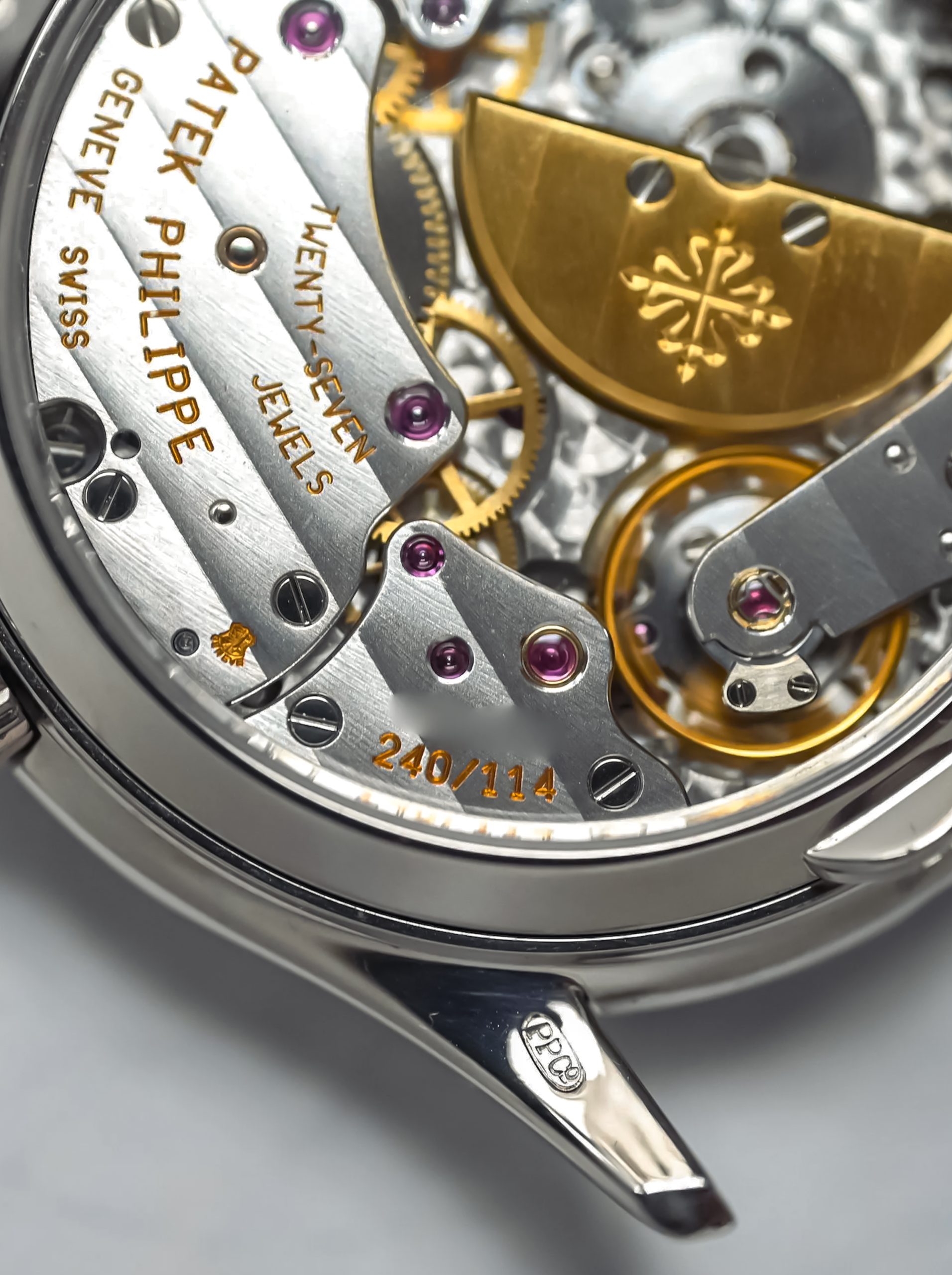
This third series (circa 1995) is distinguished by the fact that its sigma signature down at 6 falls in line with the minute track, whereas the previous second series was printed just below the outer minute track. Additionally, its subdial fonts are a modern sans serif, easily viewable on the 5 and letter J. Lastly, one may also tell by the fact that hallmarks were no longer stamped on the case side, but on the backs of all four lugs. Most white gold cased 3940s were display backs as is the case here.
This example is in good shape. The case has seen a light polish, that should be noted. But its dial is great, untouched and excellent. It comes with a full set from a well-regarded retailer.
Find this 3940G here from Iconic Swiss Watch for 68450 EUR.





